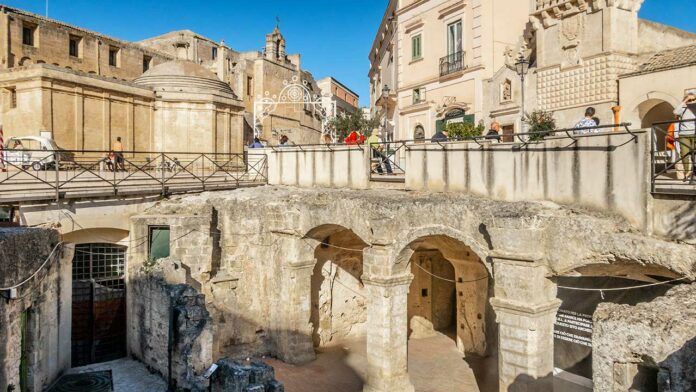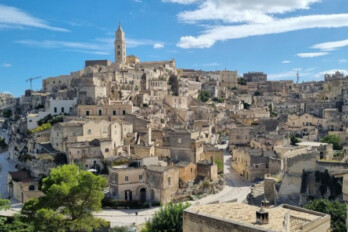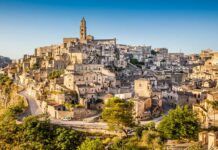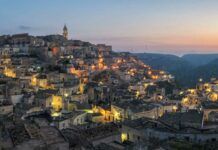This enormous cistern dug into the tuff represents the apex of a tradition linked to rainwater collection systems that began in Matera in the Neolithic period.
Among the main features that have contributed to the Sassi of Matera becoming a UNESCO World Heritage Site, is the city’s complex water system, which included numerous underground cisterns of various sizes, connected to each other like the roots of a large tree, extended under all the Sassi. The largest of these cisterns, located under the central Piazza Vittorio Veneto, is called Palombaro Lungo. In the past, it served as a source of water supply for all the buildings located in the area called “al piano”, inhabited by middle-class families, just outside the most popular Sassi. The cistern, where rainwater and spring water from the surrounding hills converged, has tuff walls covered with a special waterproof plaster, is about 15 meters tall and can reach a capacity of about 5 million liters of water.
Its realization dates back to the nineteenth century, but in subsequent years, as a result of population growth and expansion of the city, has been repeatedly enlarged, so that the main structure has gradually incorporated the smaller tanks, as well as some homes. After being used for about a century and a half as a water reserve, with the construction of the Apulian Aqueduct in 1920, the Palombaro Lungo became superfluous and was abandoned. It was rediscovered only in 1991, during the requalification works of Piazza Vittorio Veneto.
A visit to the Palombaro Lungo is an unforgettable experience: to go through the whole big cistern, which branches out like a stone labyrinth, you make a real underground itinerary, immersed in an unreal atmosphere, among pillars, arches dug in the rock and rounded walls, which earned it the name of “Water Cathedral”.











